Celebrating a century of Italian jewellery design: Fabio Salini’s modernist eye
Exclusively for Wallpaper*, Fabio Salini curates a section of his postponed exhibition at Phillips New York
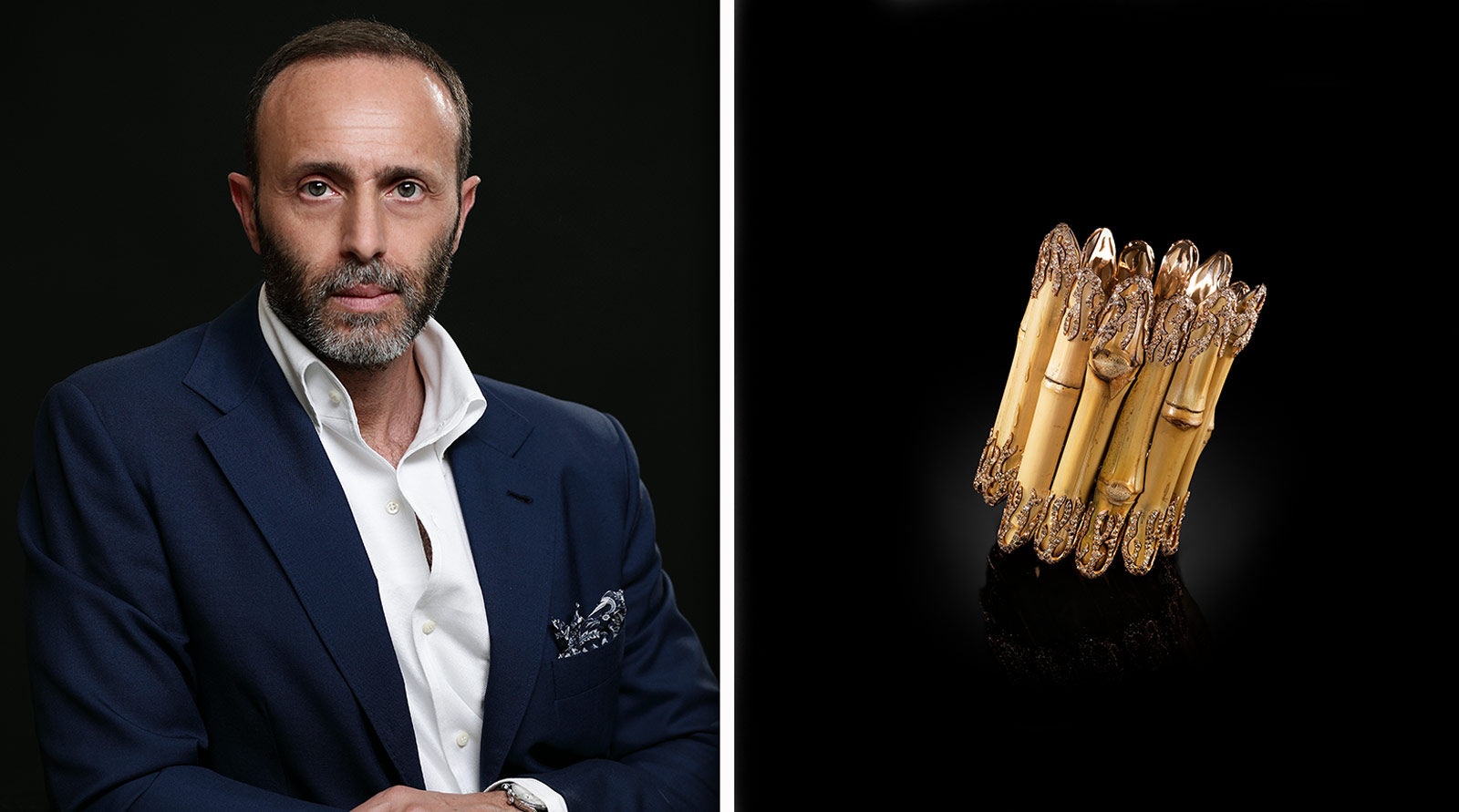
On 10 March, Phillips New York was ready to open its doors to its first contemporary jewellery exhibition of the new decade: ‘Fabio Salini: The New Modernist Jewel’, a celebration of the Italian modernist jeweller’s 20-year career. As the global lockdown took hold, the exhibition was postponed. As ardent followers of Salini’s work, and with no date yet announced as to when the exhibition can go ahead, the Wallpaper* watch and jewellery desk approached the designer to curate a personal selection of five of his favourite pieces. While, in an extract from her opening essay in the Phillips’ exhibition catalogue, the jewellery historian Vivienne Becker puts Salini’s style in context:
‘Fabio Salini studied geology at the University of Rome, before working first at Cartier and then Bulgari. He launched his own collection, in Rome, at Petochi, one of the oldest of Italian jewellers, in 1999. The Phillips exhibition charts the evolution of Salini’s powerful, graphic design aesthetic. From rock crystal, through silk, leather, shagreen, to titanium and matt, black, industrial carbon fibre, his inventive use of materials demonstrates the designer’s continual drive towards technical ingenuity. In addition to his affinity for colour and love of gemstones, Fabio Salini has an instinctive understanding of line, form, composition, and structure.
Above all, ‘Fabio Salini: The New Modernist Jewel' demonstrates Fabio Salini’s determination to innovate, to dare to be different, to re-ignite the spirit of audacity and modernity that keeps the story of jewellery moving forward.’
Here, discover Fabio Salini's section from ‘The New Modernist Jewel’ exhibition
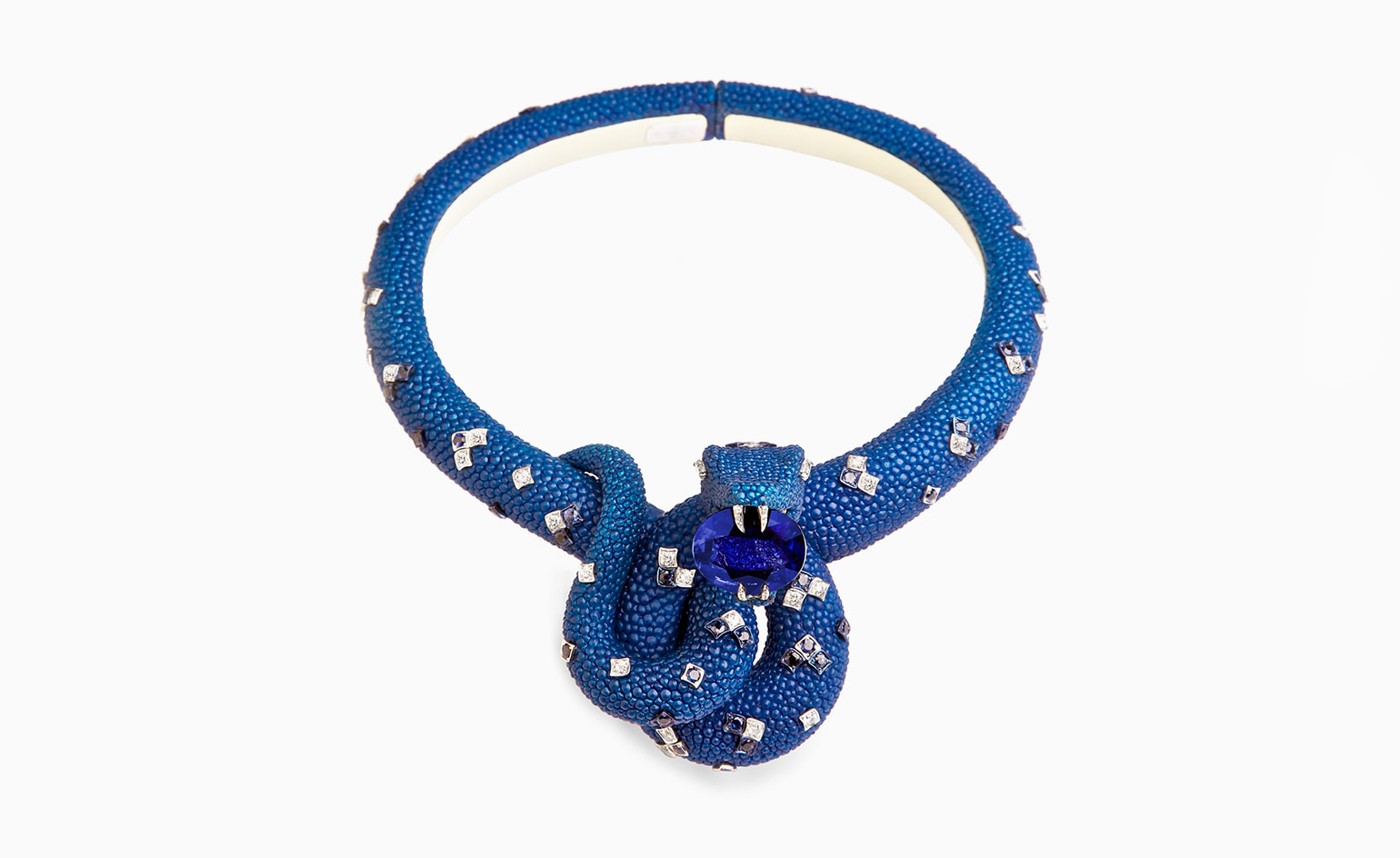
Snake necklace in blue shagreen, white and blackened gold, blue titanium, blue sapphires, diamonds and central oval-cut sapphire of 21.15 cts
‘This very precious piece was made for a client who has a very strong personality. Not only did she want a snake, but she wanted it in a very aggressive position, so I decided to design it in a mode of attack, with a big oval-cut, 21ct sapphire in its mouth. I used stingray because it represented the wild side of the animal and also represented the texture of snakeskin.’
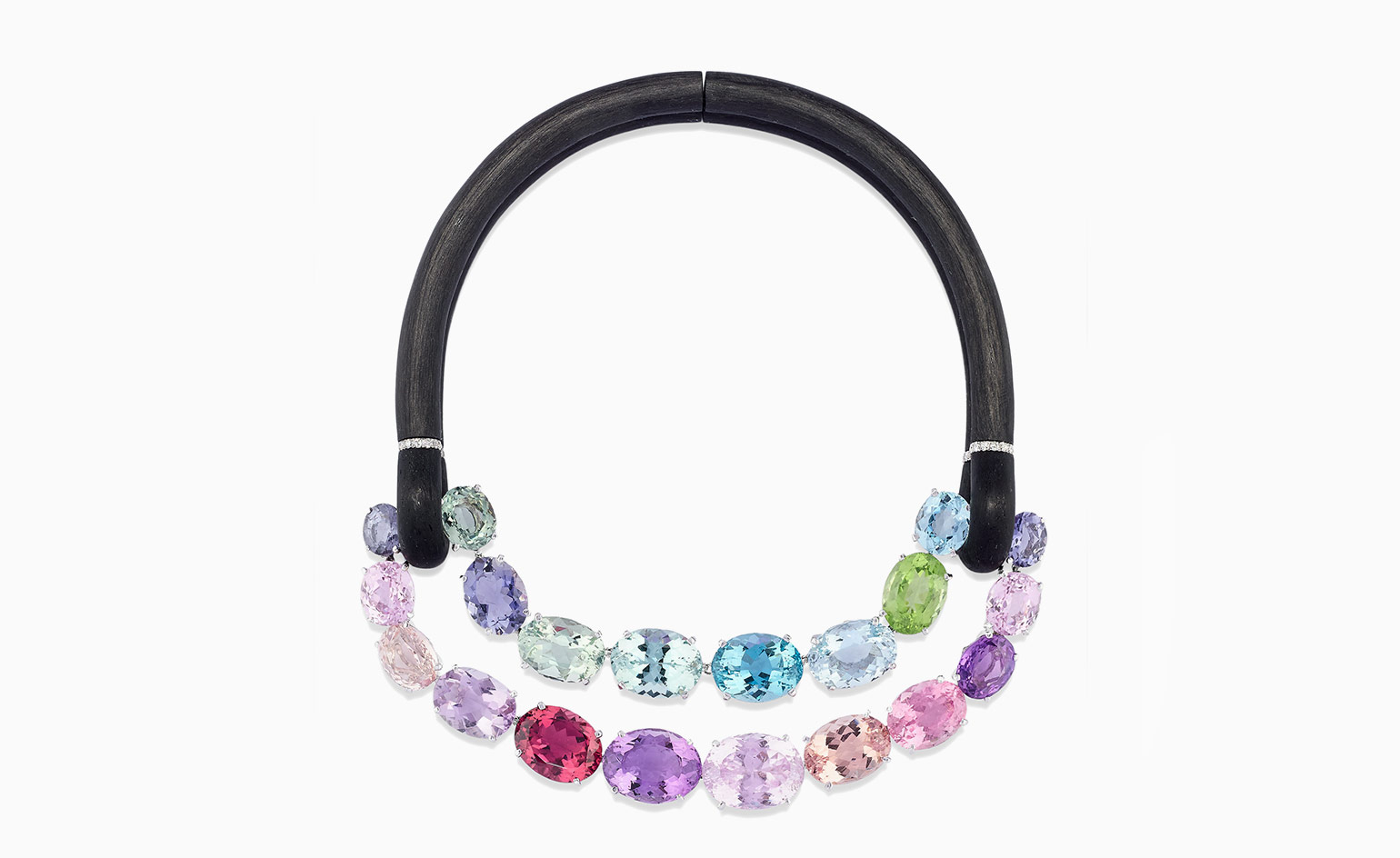
Necklace in carbon fibre with 292.78 cts of coloured gemstones, rondelles in white gold and diamonds
‘A sizeable section of the exhibition is dedicated to carbon fibre (a composite material that is extremely strong and deceptively lightweight). It brings a masculinity and strength to jewellery design, along with an idea of technology. This necklace was born from the idea of yin and yang – opposites that create a balance: matt and sparkling, non-precious and precious, rigid and articulated, one row of cold colours against a row of warm ones. All this contrast, in a way, creates a powerful feeling. This is what I strive to bring to my designs – jewellery that fuses innovation and tradition to create something new and unconventional.’
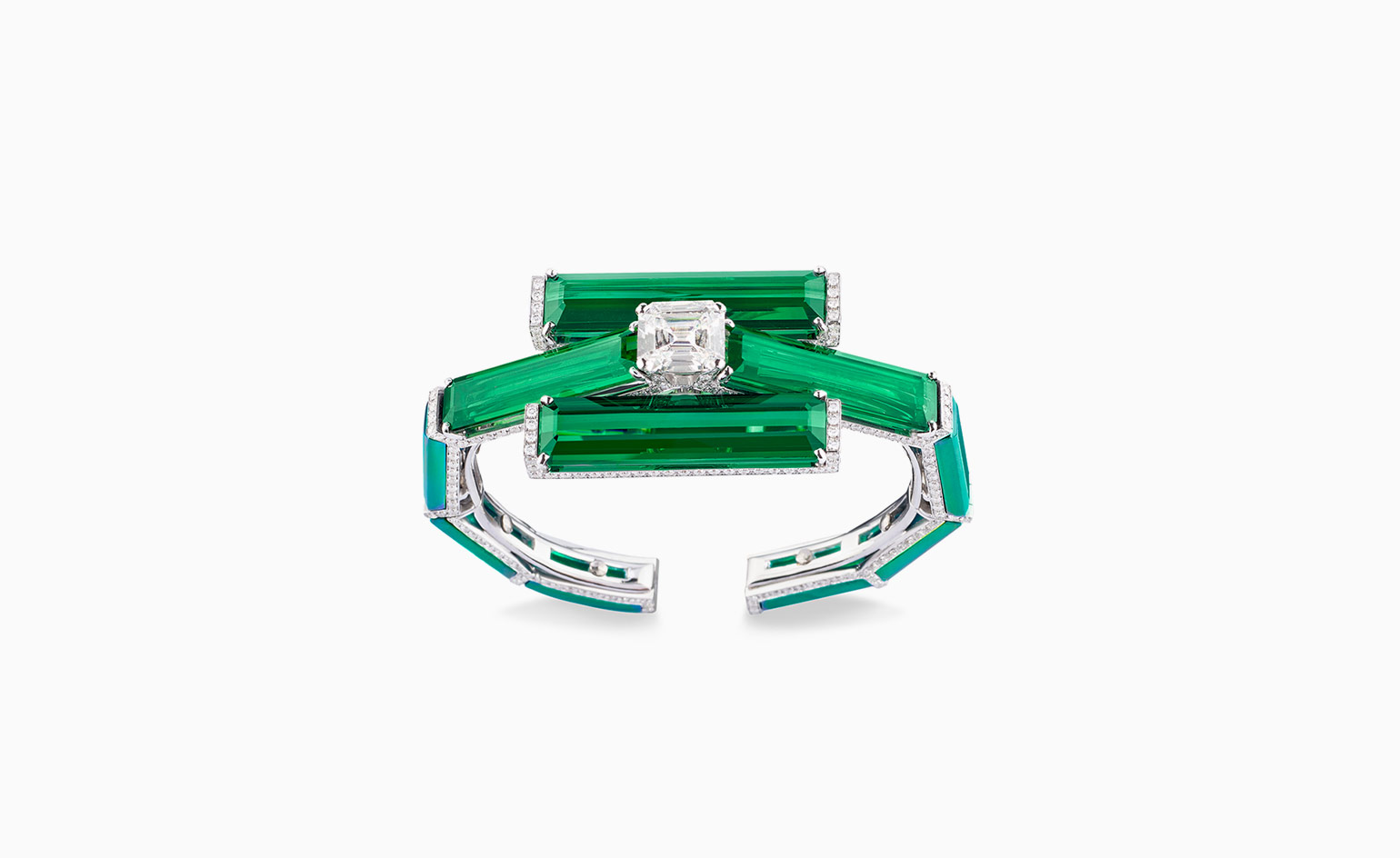
Bracelet in green titanium and white gold, with baguette-cut green tourmalines (59.61 cts), central Asscher-cut diamonds (3.48 cts) and pavé-set diamonds (2.88 cts)
‘Titanium is an important material for me – here a coloured variety perfectly matches the colour of the green tourmaline baguette which represents the centre and the preciousness of this piece. The bracelet also displays another recurring motif in my designs – the use of symbols, such as the knot, a chain, a net, a cage, the belt. These all represent holding, or linking. In a way, they are each symbols of possession, because I think that giving someone jewellery is a sign of love.’
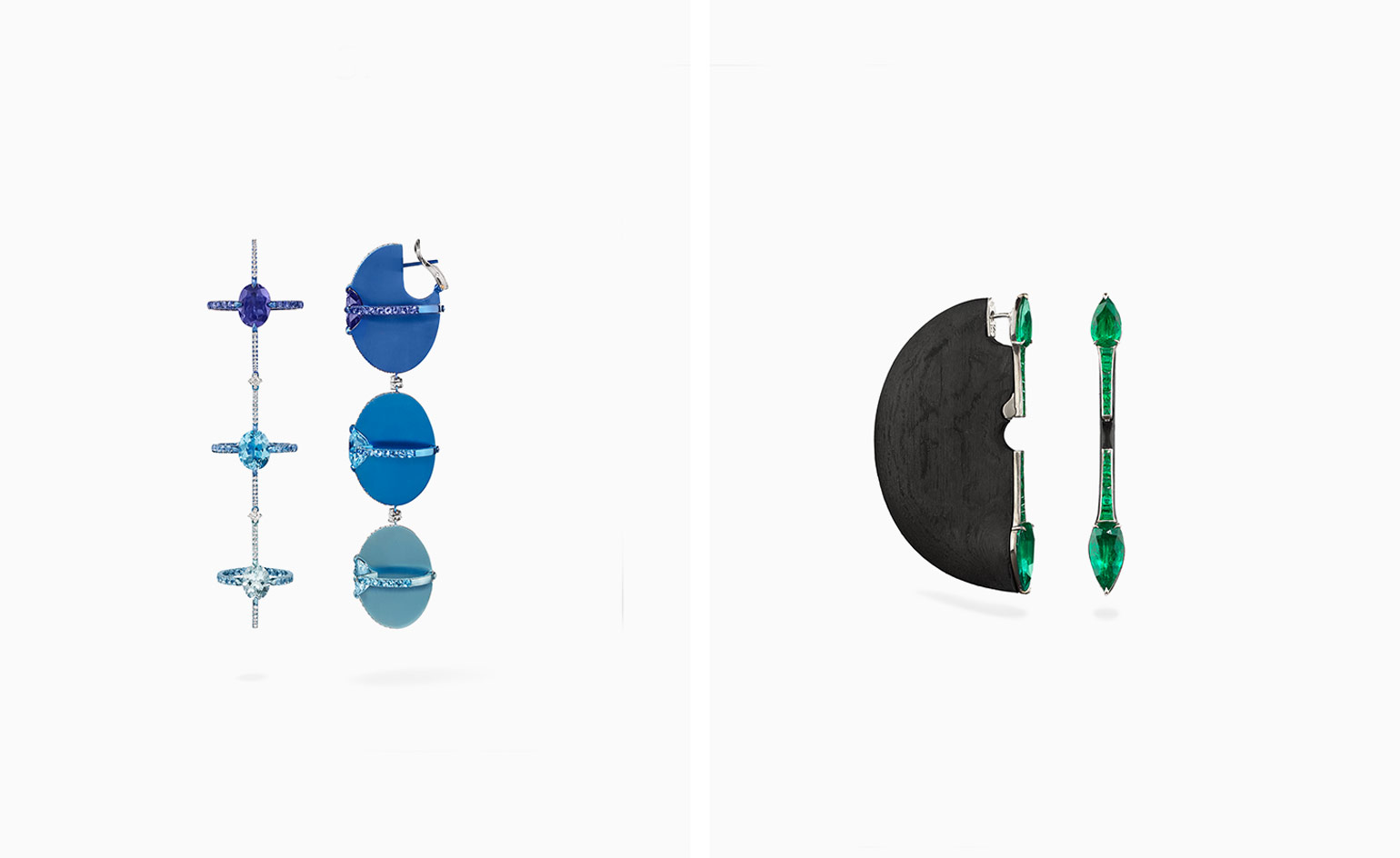
Left, titanium earrings in different shades of blue, with aquamarines 3.23 cts, blue topazes 6.21 cts, iolites 4.36 cts, edged in diamonds 2.23 cts and right, carbon fibre and gold earrings with frontal lines of pear-shape emeralds and baguette-cut emeralds (12.47 cts)
‘These are probably my favourite pieces in the whole exhibition (right), because they have a pure simplicity. The front-on view of the earrings allows you to see what appears to be a very traditional, long drop made with precious stones. But the back offers a different view – flat, spherical, carbon fibre pieces inspired by African tribal discs, which I added to create a sense of volume.'
‘I think that bringing the future and exploring the new in jewellery is very important in making it contemporary and fresh. Here (left), the design reference is satellites, while the use of titanium also reflects the desire to create something very contemporary and futuristic. The exhibition dedicates an area to my use of titanium in jewellery, which I see as a kind of space-age metal. Jewellery historian Vivienne Becker puts it her own way: ‘The mirror-like gold surfaces of these designs lure us into infinite depths of colour and light, beckoning us into Fabio Salini’s world of the 21st century modernist jewel.’
INFORMATION
Wallpaper* Newsletter
Receive our daily digest of inspiration, escapism and design stories from around the world direct to your inbox.
Caragh McKay is a contributing editor at Wallpaper* and was watches & jewellery director at the magazine between 2011 and 2019. Caragh’s current remit is cross-cultural and her recent stories include the curious tale of how Muhammad Ali met his poetic match in Robert Burns and how a Martin Scorsese Martin film revived a forgotten Osage art.
-
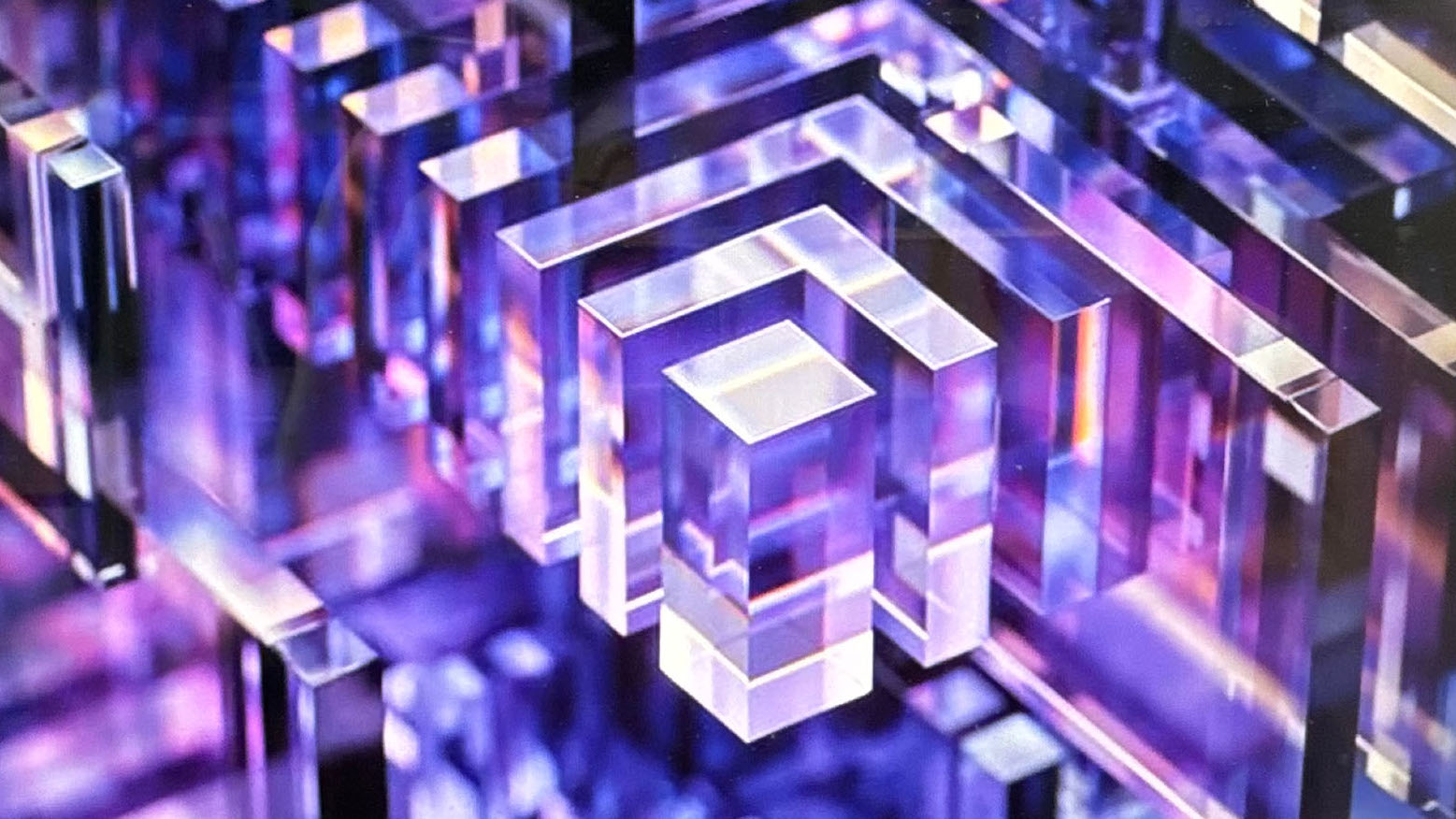 Microsoft vs Google: where is the battle for the ultimate AI assistant taking us?
Microsoft vs Google: where is the battle for the ultimate AI assistant taking us?Tech editor Jonathan Bell reflects on Microsoft’s Copilot, Google’s Gemini, plus the state of the art in SEO, wayward algorithms, video generation and the never-ending quest for the definition of ‘good content’
By Jonathan Bell
-
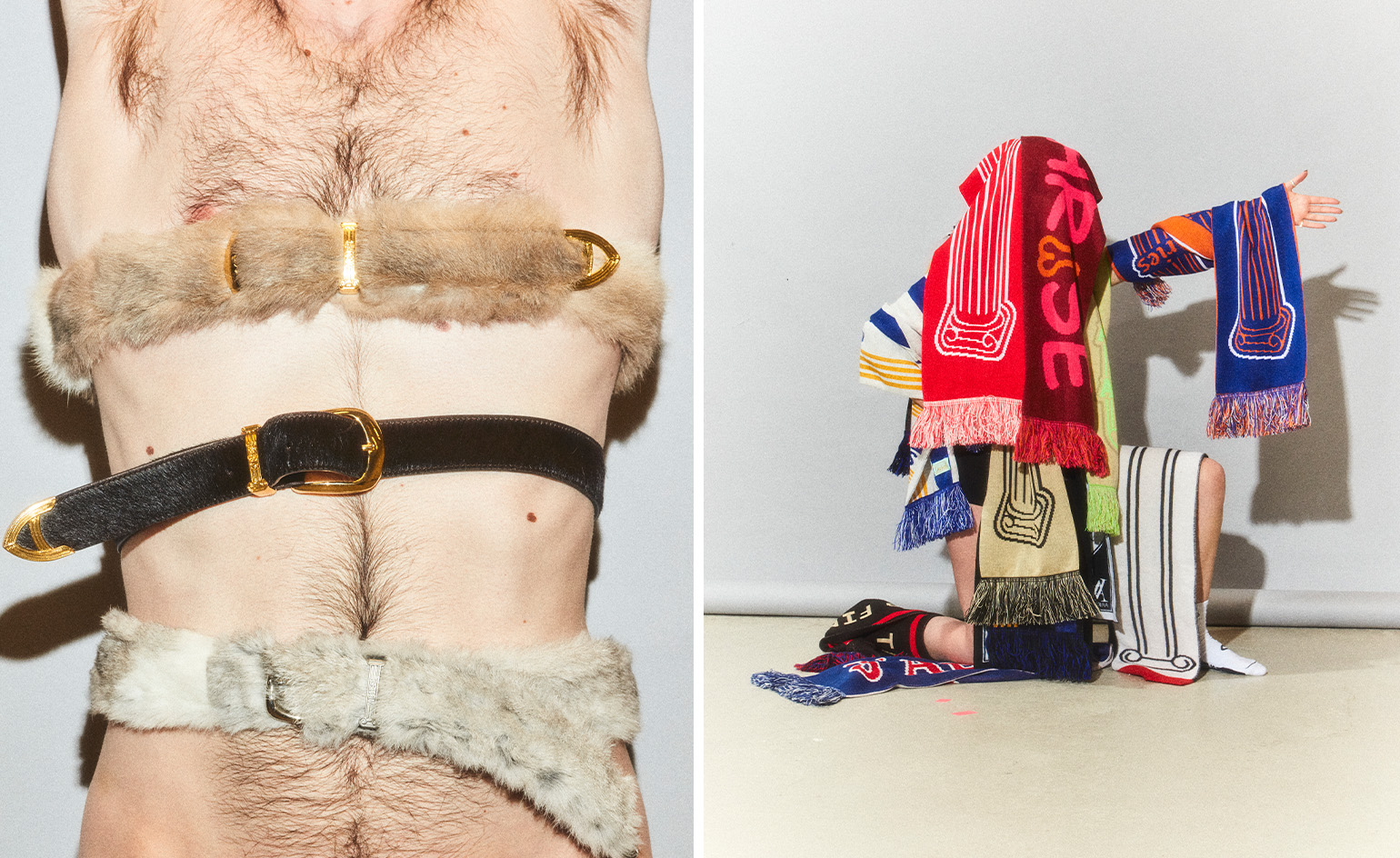 ‘Independence, community, legacy’: inside a new book documenting the history of cult British streetwear label Aries
‘Independence, community, legacy’: inside a new book documenting the history of cult British streetwear label AriesRizzoli’s ‘Aries Arise Archive’ documents the last ten years of the ‘independent, rebellious’ London-based label. Founder Sofia Prantera tells Wallpaper* the story behind the project
By Jack Moss
-
 Head out to new frontiers in the pocket-sized Project Safari off-road supercar
Head out to new frontiers in the pocket-sized Project Safari off-road supercarProject Safari is the first venture from Get Lost Automotive and represents a radical reworking of the original 1990s-era Lotus Elise
By Jonathan Bell
-
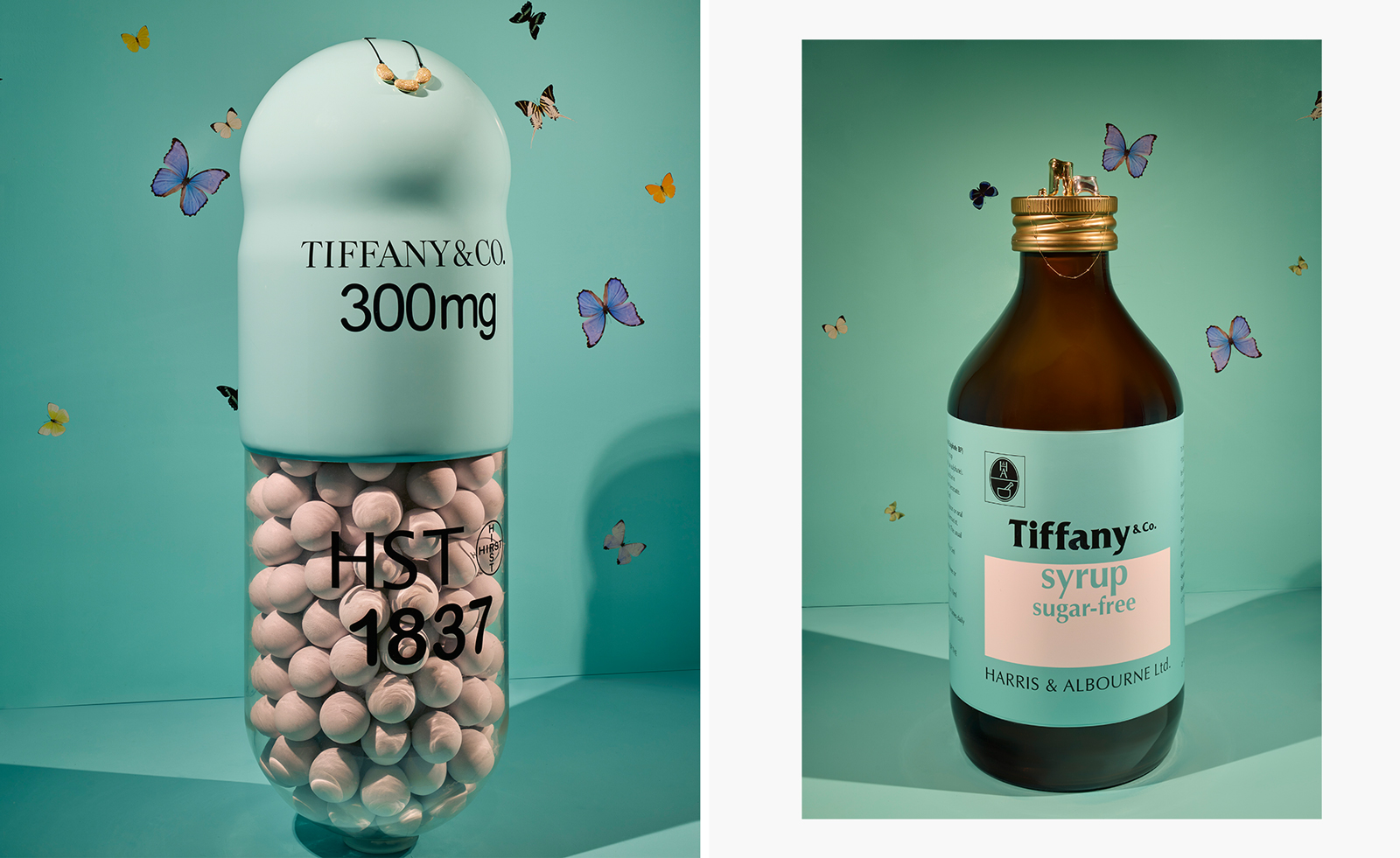 Art takes London: Tiffany & Co, Damien Hirst and artists take over Selfridges' windows
Art takes London: Tiffany & Co, Damien Hirst and artists take over Selfridges' windowsFour British contemporary artists celebrate Tiffany & Co's pioneering history with a series of storied window displays
By Anne Soward
-
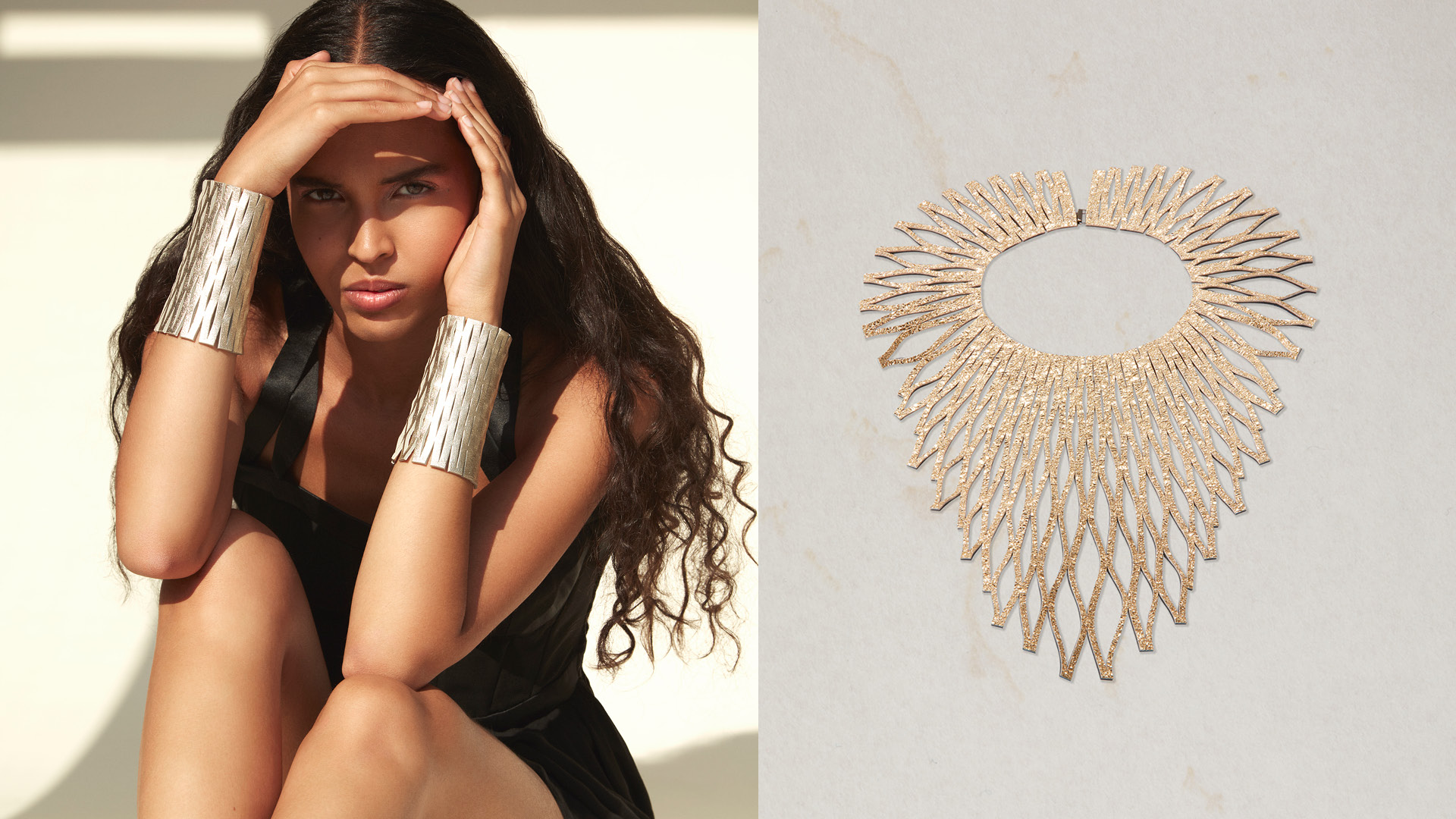 Late summer jewels: what to wear at Golden Hour
Late summer jewels: what to wear at Golden HourLate summer signals a jewellery style-shift. These independent designers have got it covered
By Caragh McKay
-
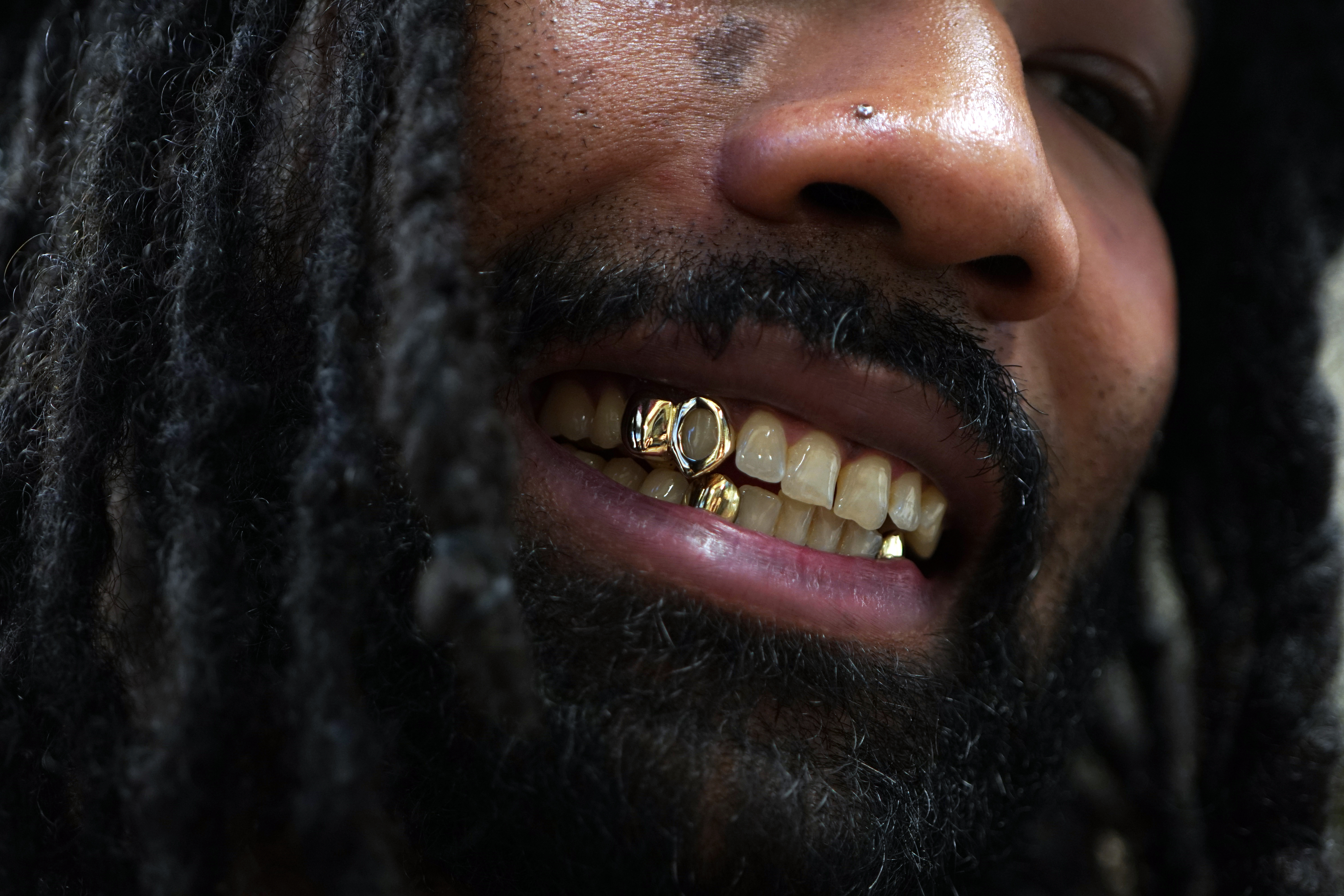 All smiles: How a grillz jewellery making class in London became an international hit
All smiles: How a grillz jewellery making class in London became an international hitWhat started as a passion project quickly exploded in popularity. We get the story behind the grillz-making workshop at Cockpit London
By Elisa Anniss
-
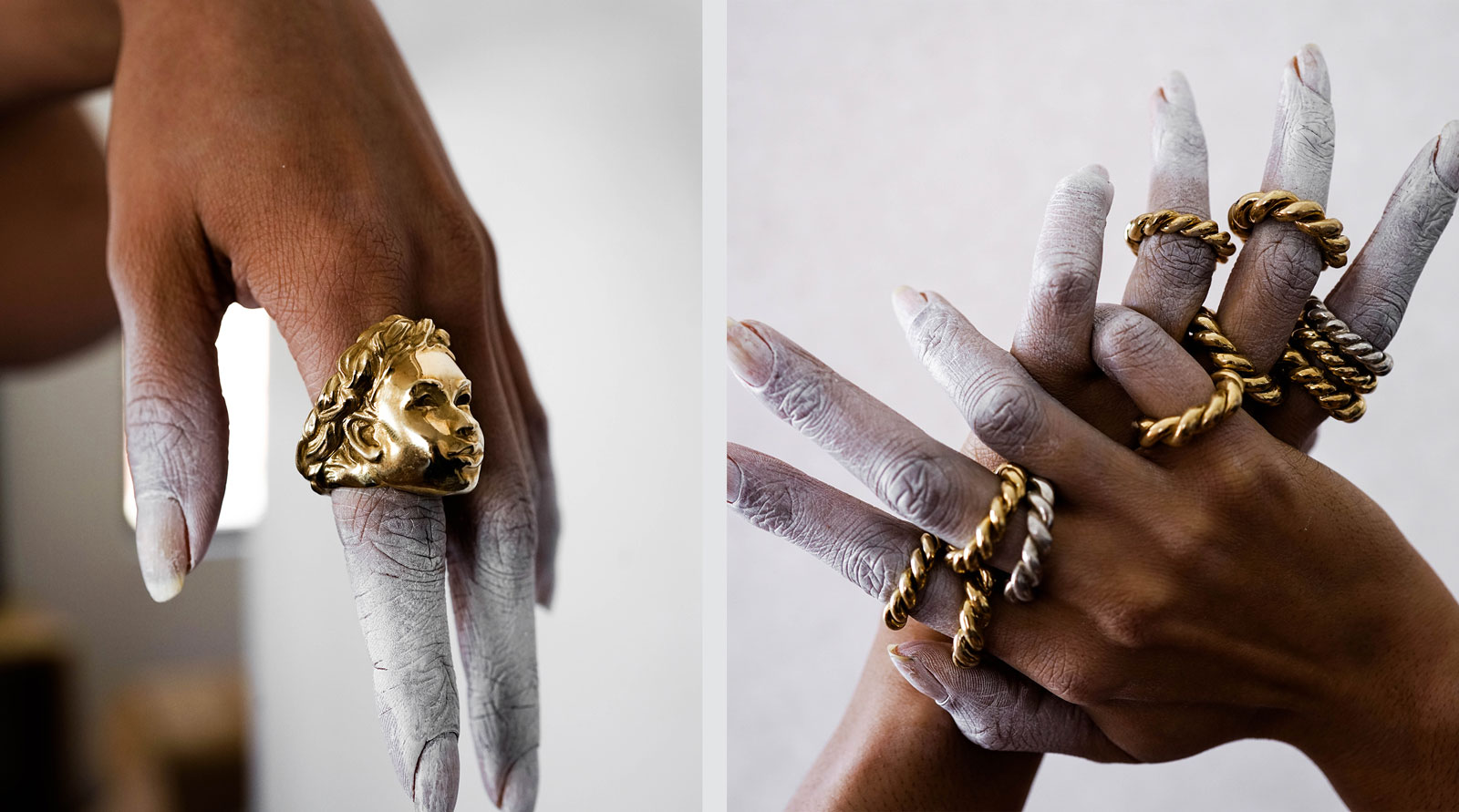 Emerging jewellery designers to get to know
Emerging jewellery designers to get to knowThese independent, new and emerging jewellery designers and brands from New York to Paris are firmly on our radar
By Hannah Silver
-
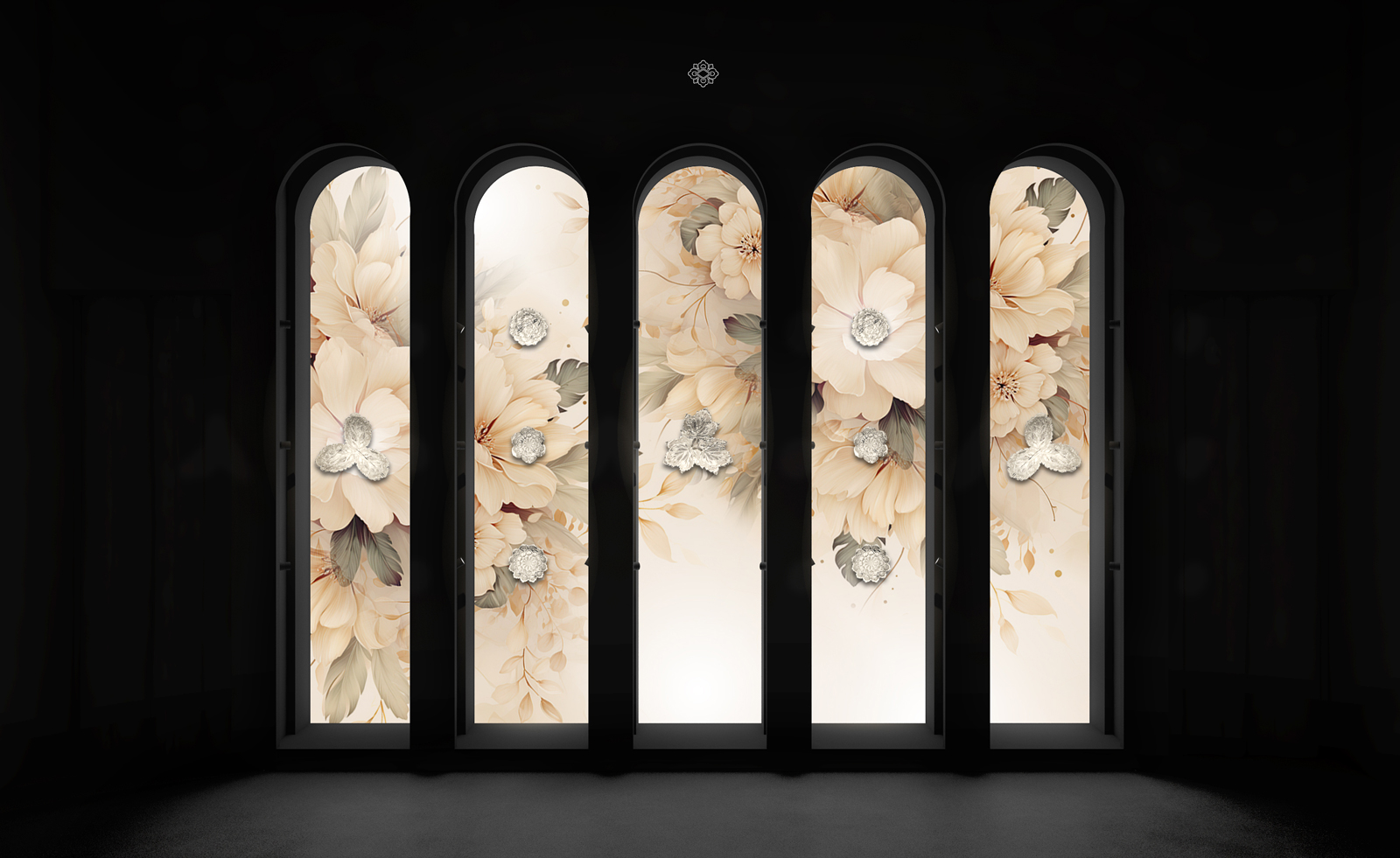 Buccellati announces a major retrospective in Venice
Buccellati announces a major retrospective in VeniceThe upcoming Buccellati exhibition in Venice, ‘The Prince of Goldsmiths, Rediscovering the Classics’, is produced by Balich Wonder Studio and curated by Alba Cappellieri
By Hannah Silver
-
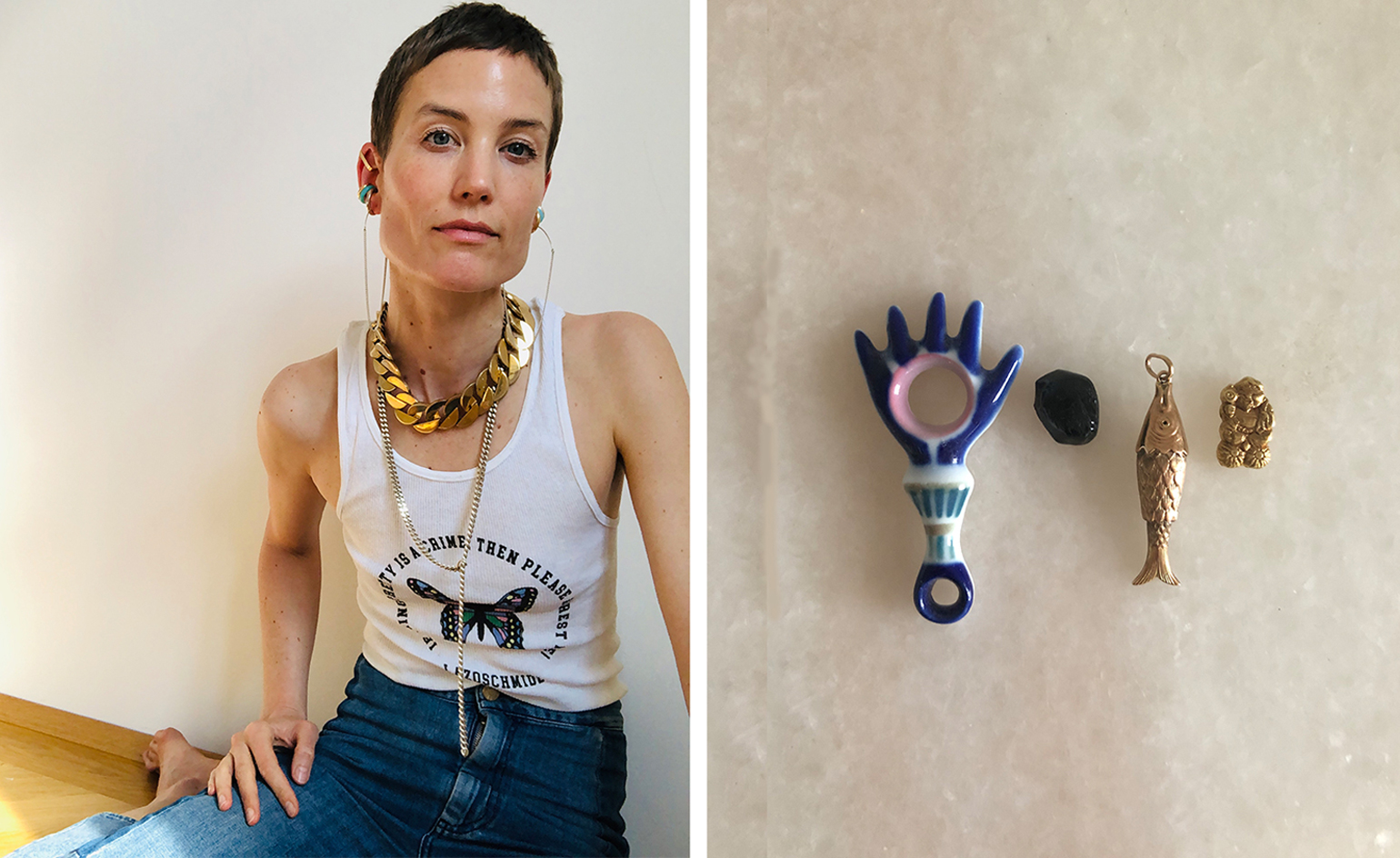 Jewellery designers share their most precious personal pieces
Jewellery designers share their most precious personal piecesA host of jewellers give us a peek at the jewellery which brings them joy and solace
By Hannah Silver
-
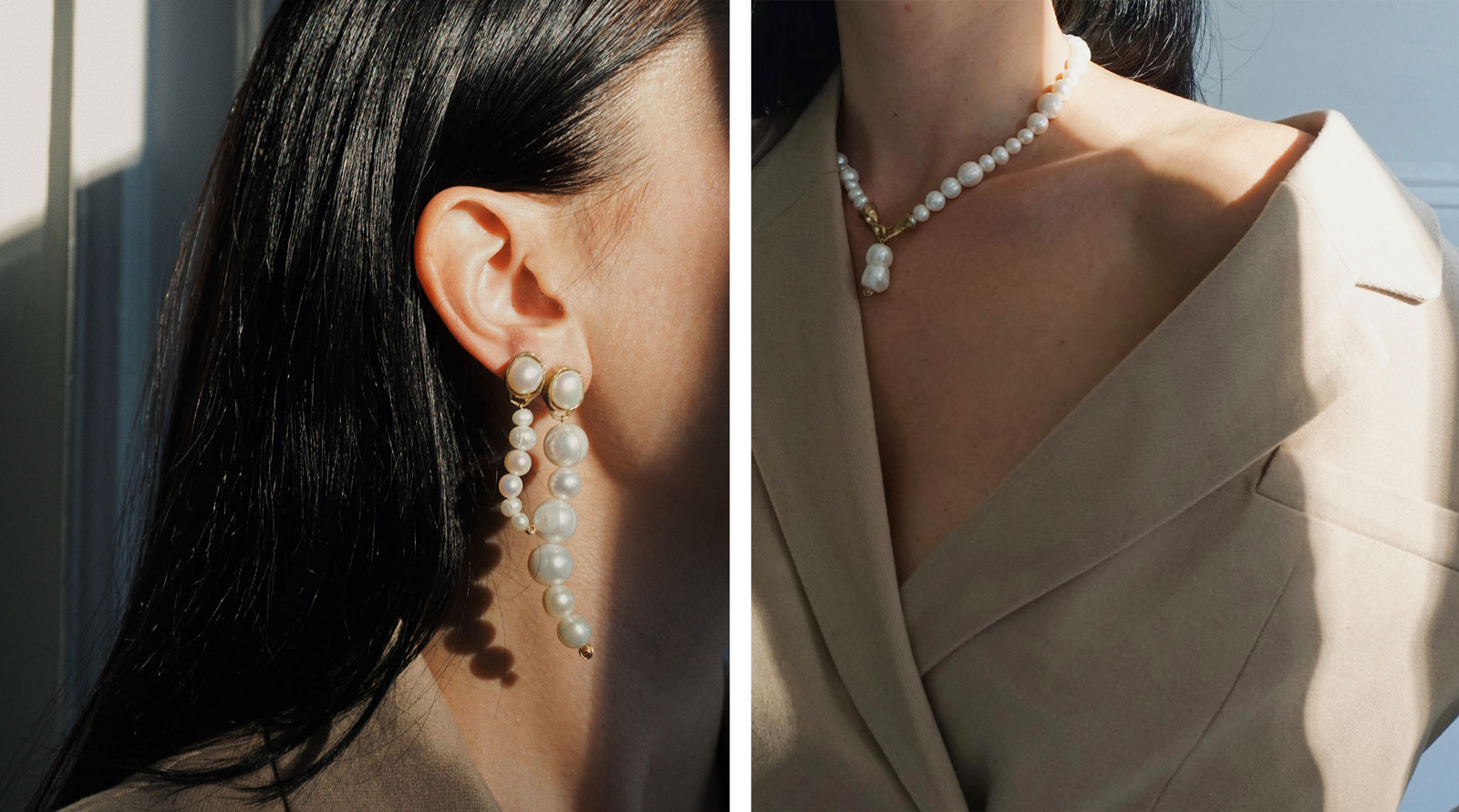 Playing it cool: pearls are having a moment
Playing it cool: pearls are having a momentWe've been deep-diving into boutiques around the world to find the very best calcium carbonate in minute crystalline form. It seems jewellers have been busy rethinking pearls, with contemporary (and often affordable) results
By Hannah Silver
-
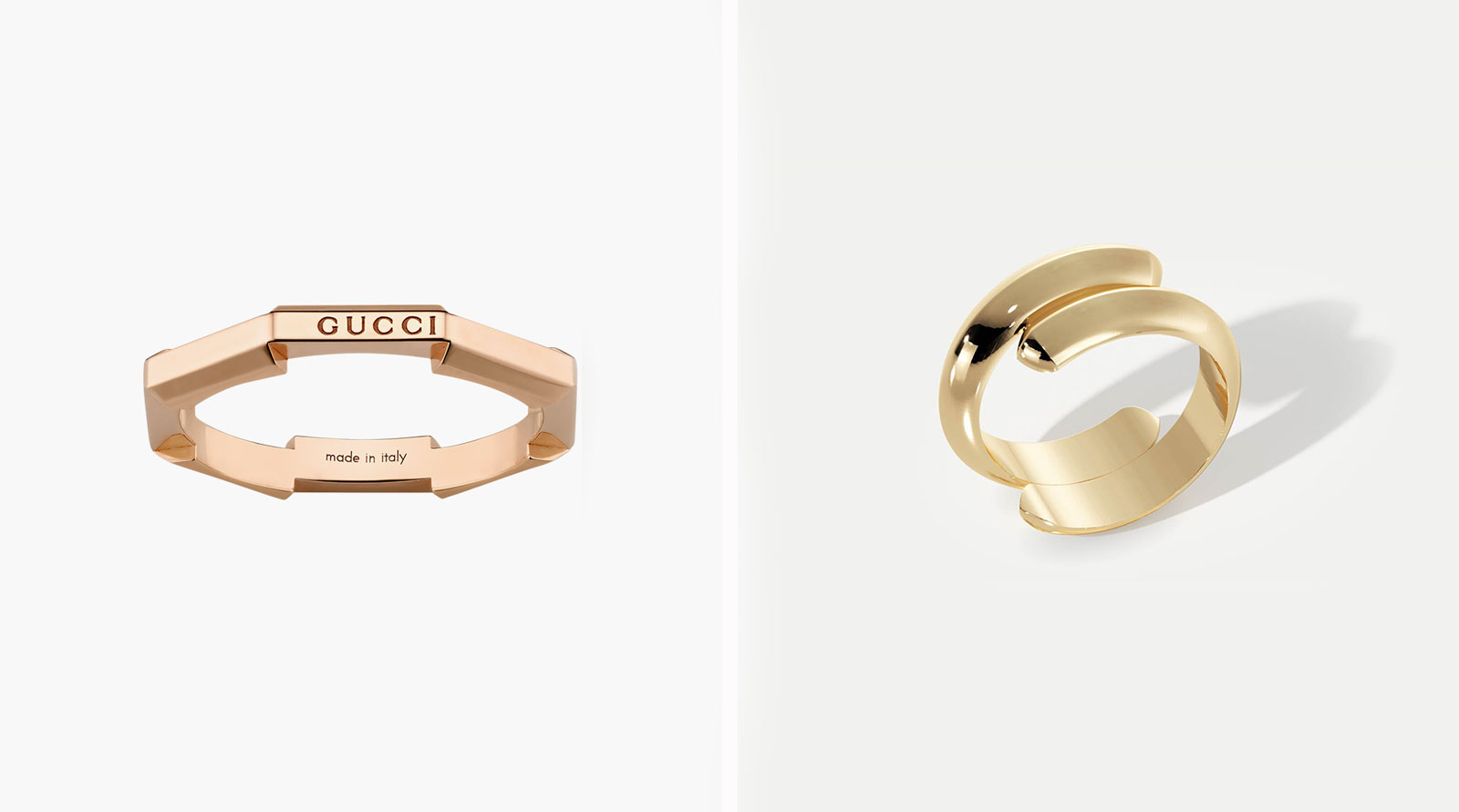 Eternity rings for the modern couple
Eternity rings for the modern coupleEternity rings, whether sleekly minimalist or sprinkled in diamonds, can be a chic and contemporary love token
By Hannah Silver